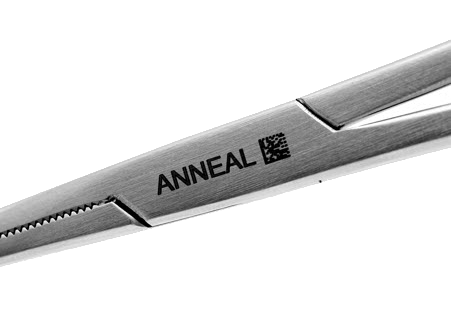FDA and GS1 UDI Medical Marking Services
Recently, the United States Food and Drug Administration (FDA) and the European Commission have passed legislation for UDI or Unique Device Identification. This will require certain types of medical devices and packaging to be marked with a specifically formatted machine readable code (2D or Linear Barcode).
The Unique Device Identification (UDI) is a system used to mark and identify medical devices within the healthcare supply chain. The IMDRF (International Medical Device Regulator Forum), the United States Food and Drug Administration (FDA) and the European Commission are aiming for a globally harmonised and consistent approach to increase patient safety and help optimise patient care by proposing a harmonised legislation for Unique Device Identification (UDI), using global standards.
The rule establishes that:
- a unique device identifier number should be assigned by the device manufacturer to each version or model of a device
- the unique device identifier should be both in human readable format and in AutoID format. By default, this information will be applied on the label of each device uniquely identified.
UDI should be applied to all medical devices made available on the US market.
U.S. FDA Global UDI Database (GUDID)
As part of the UDI system, the FDA is also created the Global Unique Device Identification Database (GUDID) which include a set of data attributes, for each device marked with a UDI. Manufacturers are responsible for submitting and maintaining their own data in the FDA’s GUDID.
UDIs and Traceability for Medical Devices
Marking medical devices with a UDI helps to protect patients, improve the recall process, and make the medical system more efficient through product identification, safety, and regulatory compliance. Laser marking also helps to identify any variable data and serial numbers associated with a piece of equipment.
What material applications for the military can Innotech Laser print on?
- Metals
Batteries, Bone Saws, Clamps, Contact Lens Molds, Dental Clamps, Dental Drills, Forceps, Hemostats, Hypodermic, Needles, Implants, Instrument Trays, Mallets, Knives, Veterinary Tags - Plastics
Orthopedic, Oxygen Regulators, Pacemakers, Components, Pins, Saws, Scalpels, Surgical Screws, Catheters, Connectors, Syringes, Drug Testing Kits, Hearing Aids, Components, Insulin Dispensers, Lenses Acrylic Prosthesis, Sponges, Stints, Tubing - Composites
Instructional Body Components - Glass
Optics Slides, Test Tubes, X-Ray Tubes - Ceramics & Others
Heart Valves, Implants
Why is laser marking best suited for the medical industry?
Through the use of fiber laser marking and engraving, we are able to make the most permanent mark medical tools and components without damage. There is no destruction or degrading during the process, and we are able to validate and confirm each mark.
Laser marking is a compliant and cost-effective marking method for medical application because of its permanence and bio compatible nature. Innotech-Laser can help your company meet the new FDA ruling by marking parts or by providing the necessary equipment to keep production in-house.
Interested in medical marking?
Call us 215-675-4740 or request a QUOTE.
Medical Organization and Specification Resources:
AIDC
Automatic Identification and Data Capture.
UDI
Unique Device Identifier.
HIBCC®
Health Industry Business Communications Council®.
LIC
Labeler Identification Code.
HIBC
Health Industry Bar Code developed by HIBCC.
GTIN
Global Trade Item Number developed by GS1.
GLN
Global Location Number developed by GS1.
GS1
GS1 is a neutral, not-for-profit, international organization that develops and maintains standards for supply and demand chains across multiple sectors.
FDA
US Food and Drug Administration.


